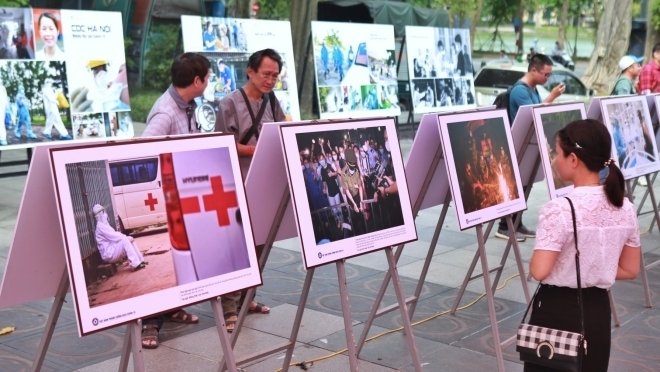


Themed ‘Vietnam prevents and controls the COVID-19 epidemic’, the exhibition is being held jointly by the Vietnam Association of Photographic Artists (VAPA) and the Hanoi city Department of Culture and Sports.
Speaking at the opening ceremony, VAPA Chairman Vu Quoc Khanh said that the exhibition is held to examine life in Vietnam during its battle against COVID-19 while honouring the contributions made by photographers and photojournalists who recorded vivid and touching moments during the country’s struggle to repel the epidemic.
Works on display are arranged across five topics featuring Vietnam’s directions and efforts to combat COVID-19, activities of the country’s education and healthcare sector during the epidemic, and the people’s participation in the COVID-19 fight.
The photos provide viewers with a comprehensive and vivid look into the life of the Vietnamese people during this difficult period.
They were selected from nearly 2,750 entries, including over 2,490 photos and 257 sets of photos sent to the VAPA by 406 photographers from 52 cities and provinces nationwide.
After Hanoi, the exhibition will be held in cities and provinces across the country to raise public awareness about the prevention and control of COVID-19.
selected photos on display at the exhibition:
Source: NDO